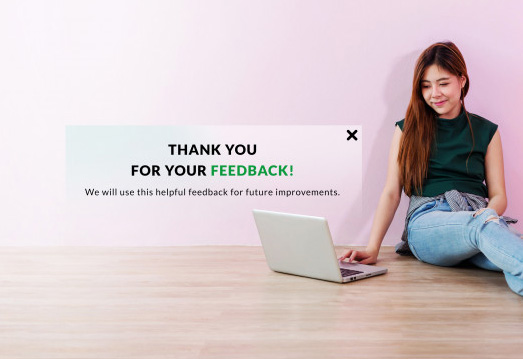Keen to know more
about our Full Service?
Our world class qualitative user testing can help explain the why behind your data and give you the answers to your burning questions.
 We’ve all been there. A week after you made the mental note to yourself, you finally remember to get round to reporting that dangerous gaping pothole to the district services. You jump onto their website after coming home from work, navigate through a labyrinthe of pages, and then see a “Customer Enquiry Form” that looks more like a passport application. And then you slowly think to yourself, “ah, the pothole can wait another week or two, someone else has probably emailed them anyway…”
We’ve all been there. A week after you made the mental note to yourself, you finally remember to get round to reporting that dangerous gaping pothole to the district services. You jump onto their website after coming home from work, navigate through a labyrinthe of pages, and then see a “Customer Enquiry Form” that looks more like a passport application. And then you slowly think to yourself, “ah, the pothole can wait another week or two, someone else has probably emailed them anyway…”
Over complicated, complex and convoluted user forms put us off doing things we need, want or even like to do – you get the picture. At the other end of the spectrum, simple, well-designed and efficient user forms encourage us to do those things. And those things – whether they’re making an enquiry about a service, giving valuable customer feedback or ordering a product – are often things with quite vital impacts on your bottom line. So, how do we make it easy for our customer and clients complete user forms or, essentially, communicate with us?
Our ongoing research here at TestMate has thrown up some interesting insights into how you can give your customers a smooth user experience when they fill out those important user forms. Here are four of our key pointers:
1. Pay attention to the length, design and spacing: Nothing puts customers off as much as over long forms, so keep it short, clean, and simple and you’ll get more responses. You can always request further information in your follow-up to the customer of course. And space your questions carefully in a smartly designed form, this will help users see which are linked to each other, providing them with context and helping avoid confusion.
 2. Interaction helps: Interactive forms are a boost to the user’s experience. Not displaying all the required fields until the user has answered the question – for example – helps smooth the customer journey. Users complete the forms quicker as they don’t waste time answering irrelevant questions, and find them more fun as they want to discover where their selected answer leads to.
2. Interaction helps: Interactive forms are a boost to the user’s experience. Not displaying all the required fields until the user has answered the question – for example – helps smooth the customer journey. Users complete the forms quicker as they don’t waste time answering irrelevant questions, and find them more fun as they want to discover where their selected answer leads to.
3. Information helps: Informative forms are also a boost to the user’s experience. By this we do not mean overloading them with information, but using clear, concise language and avoiding industry jargon as much as possible. If you think a question maybe unclear to the average customer, you can throw in an information box to explain what you’re looking for in simple terms. Hand pick your information to make your form easily understandable and you will enhance the overall user experience.
 4. Let your users know what will happen next: Once they have been given the chance to attach a file and submitted the form, tell your customers what will happen next. Will they receive an emailed reply within 24 hours? Or will a member of the team call them to discuss their issue? Either way, tell them. This helps to set their expectations of progress, which you can then – if possible – exceed.
4. Let your users know what will happen next: Once they have been given the chance to attach a file and submitted the form, tell your customers what will happen next. Will they receive an emailed reply within 24 hours? Or will a member of the team call them to discuss their issue? Either way, tell them. This helps to set their expectations of progress, which you can then – if possible – exceed.
Do you want to know your user’s thoughts on your existing forms? TestMate can help! Get in touch to see how we can tailor our user testing to your demographics.

Our world class qualitative user testing can help explain the why behind your data and give you the answers to your burning questions.